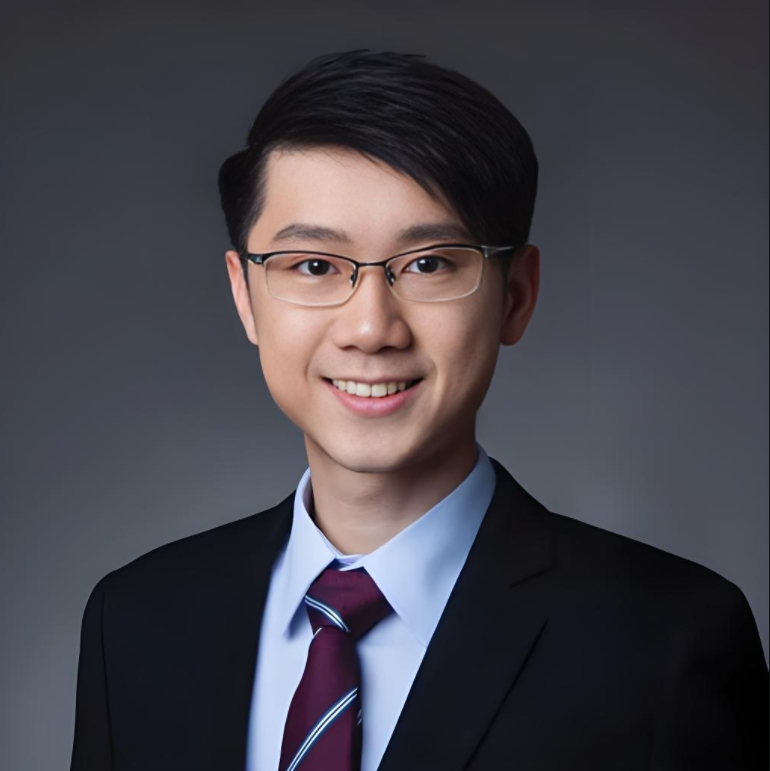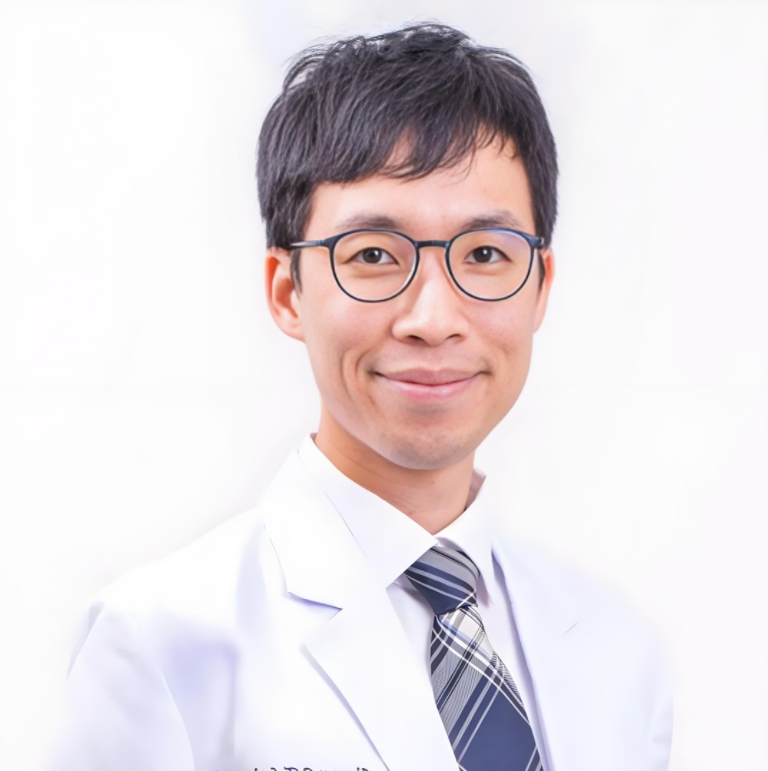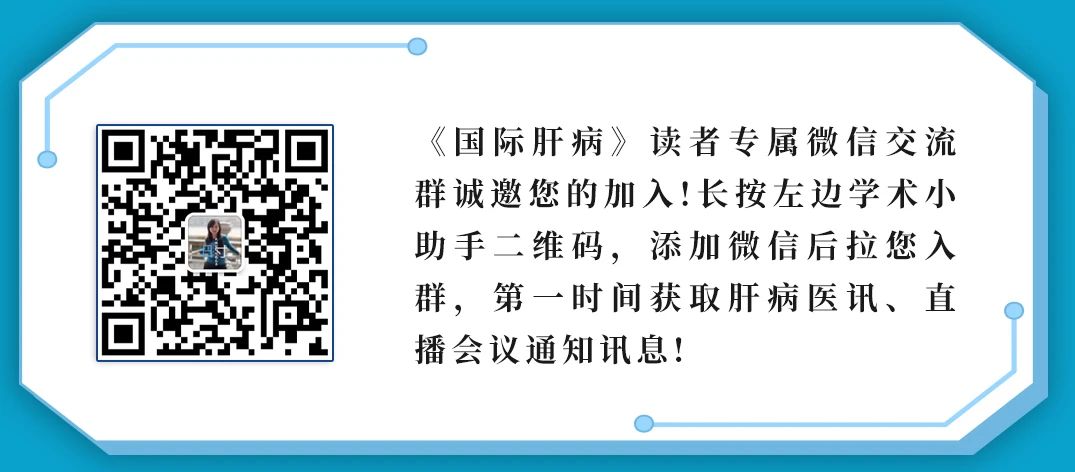
编者按
在近期举办的2024年美国肝病研究学会年会(AASLD 2024)上,来自全球肝病领域的顶尖专家齐聚一堂,分享了众多肝病研究与临床实践的最新突破。《国际肝病》邀请了中国香港中文大学Terry Cheuk-Fung Yip教授与Jimmy Che-To Lai教授对会议亮点进行了全面的概括,探讨了乙型肝炎、代谢相关脂肪性肝病(MASLD)、门静脉高压和肝硬化方面的重要进展。
https://mp.weixin.qq.com/s/a2-3tdjGkLC0wDi3ewbdBw
点击上方链接查看采访视频
01
《国际肝病》
在本次AASLD大会上,两位教授均作了多场口头报告。请简要介绍一下这些研究的主要成果及其临床意义?

Terry Yip教授
今年的AASLD大会非常精彩。本次大会展示了大量高质量的研究,包括壁报和口头报告。我参加了两个口头报告环节:一个聚焦慢性乙型肝炎,另一个聚焦于MASLD。
在乙型肝炎的报告环节中,我发现许多报告都讨论了与HBsAg清除相关的因素。其中重要因素包括停药以及停药后再治疗是否会影响未来实现HBsAg成功清除。此外,一些研究人员研究了连续测量HBsAg水平的动态变化,并探索了其是否能预测实现HBsAg清除的可能性。
在MASLD的报告环节,一些报告同样非常有趣。有报告详细讨论了现有疗法如何惠及患者。例如,目前处于Ⅱ期和Ⅲ期试验的胰高血糖素样肽-1(GLP-1)受体相关激动剂在改善MASLD患者的肝脂肪变性和纤维化方面显示出显著成效。GLP-1受体激动剂已经广泛应用于2型糖尿病患者和肥胖患者,研究人员分享的报告指出,这类药物同样有助于MASLD患者的治疗,例如改善心血管功能、降低发生重大心血管事件的风险以及解决肝脏相关问题。
我认为这两个话题是本次大会的主要亮点。

Jimmy Che-To Lai教授
我完全同意Terry的看法。今年的美肝会非常精彩,不仅有关于乙型肝炎和MASLD的口头报告,还有关于门静脉高压和肝硬化的报告。
我参加了一个关于门静脉高压和肝硬化的全体会议,我觉得特别有意思。其中一项口头报告讨论了肝硬化心肌病以及使用床旁超声进一步评估患者体液状态的方法,该方法有助于评估患者是否存在急性肾损伤的风险,并确定导致此类风险的因素。
另一项有趣的研究探讨了奥曲肽治疗持续时间是否会影响食管静脉曲张出血患者早期再出血的风险。所有这些研究都极具启发性,并为未来的临床实践提供了数据支持。
此外,还有许多门静脉高压和肝硬化相关研究正在进行中,这也激励我们思考未来如何改进治疗方案。我希望在未来的研究和实践中,能改进现有治疗方法,完善治疗方案,改善患者临床结局。
Hepatology Digest: Both professors presented several oral presentations at this AASLD conference. Could you please briefly introduce the main results of these studies and their clinical significance?
Professor Terry Yip: Yes, this year, I think AASLD has been truly amazing. They provided a lot of high-quality content, including both poster presentations and oral presentations. Yesterday, I attended two oral presentation sessions: one focused on chronic hepatitis B and another on metabolic dysfunction-associated steatotic liver disease, or MASLD.
For the hepatitis B session, I found it particularly interesting. Many presentations discussed factors associated with HBsAg seroclearance. Some important factors included stopping treatment and whether retreatment after stopping could impact the future chances of achieving HBsAg seroclearance. Additionally, some researchers examined the kinetics of serial HBsAg level measurements and explored whether this could predict the likelihood of achieving HBsAg seroclearance.
The session on MASLD was equally fascinating. There were detailed discussions about existing therapies and how they can benefit our patients. For example, GLP-1 receptor agonists and related dual/triple agonists, which are currently in phase two and phase three trials, have shown remarkable success in improving hepatic steatosis and fibrosis in MASLD patients. Since we already use GLP-1 receptor agonists for many of our patients with type 2 diabetes and obesity, investigators shared valuable insights into how these drugs might also help patients with MASLD. These benefits include improving cardiovascular function, reducing the risk of major cardiovascular events, and addressing liver-related issues.
These two topics were undoubtedly major highlights of the conference for me.
Professor Jimmy Che-To Lai: Yes, I fully agree with Terry. The Liver Meeting this year has been wonderful, with a variety of oral presentations, not only on hepatitis B and MASLD but also on portal hypertension and cirrhosis.
Just now, there was a plenary session on portal hypertension and cirrhosis that I found particularly fascinating. One oral presentation discussed cirrhotic cardiomyopathy and the use of point-of-care ultrasound to further assess the fluid status of patients. This approach can help identify patients at risk of acute kidney injury and determine factors contributing to such risks.
Another interesting trial explored whether the duration of octreotide treatment affects the risk of early rebleeding in patients with variceal bleeding. All of this research is incredibly thought-provoking and provides data that may eventually inform clinical practices.
Regarding portal hypertension and cirrhosis, there has been a lot of great work going on. These findings stimulate us to think about what more we can do in the future to refine treatment algorithms. Hopefully, future studies and practice updates will help improve patient outcomes by building on this robust body of work.
02
《国际肝病》
今年你们参加了APASL、EASL和AASLD三大会议,请问最大的收获是什么?这些会议对两位未来的研究方向有何启示?

Terry Yip教授
今年我们参加了APASL、EASL和近期的AASLD会议。我觉得这些会议都很有意义。我的研究重点是乙型肝炎和MASLD,所以这些话题对我来说非常重要。乙型肝炎是亚太地区的一个重大公共卫生挑战。在APASL上,我深入学习了亚太地区治疗疾病的独特观点,还学习了如何使用现有治疗方法帮助患者,预见了未来新疗法如何进一步改善患者的管理。
其中最重要的是,我从这些会议中学到了很多关于乙型肝炎“中间期”患者的知识。这类患者无法完全用现有HBeAg,HBV DNA和ALT水平进行分期,因此常被视作处于治疗的“灰色地带”。会议中的讨论特别强调了这一群体面临的肝细胞癌(HCC)风险,以及治疗干预对于改善此类患者预后的重要性。我认为参加APASL、EASL和AASLD加深了我对这个话题的理解。
总而言之,我最大的收获是,我认识到必须优化乙型肝炎患者的分类体系与管理策略,尤其是针对那些处于“灰色地带”的患者,并且要积极为未来临床实践中新型疗法的引入与应用做好充分准备。

Jimmy Che-To Lai教授
我们像会议伙伴一样一起参加了所有三次会议,这些会议都很有意义。除了乙型肝炎,这些会议中另一个重要话题是脂肪肝,包括MASLD。脂肪肝已成为全球研究者关注的焦点,其患病率持续攀升,研究人员正在深入研究代谢负担以及饮酒的作用。其中一个有趣的话题是饮酒是否与脂肪性肝病的自然史和进展相互作用或影响。
门静脉高压和肝硬化仍然是肝病领域的关键话题。这些会议中令我印象深刻的是不同地区的临床实践存在显著差异。
这些会议呈现出的趋势是,医学界越来越倾向于使用非侵入性评估方法评估肝纤维化和门静脉高压。尽管仍有许多未解决的问题,但这些会议为这一领域提供了新的数据和启发。
我希望,随着脾脏硬度测量和基于血清的非侵入性评估等技术的应用,未来能够更准确地评估肝纤维化和临床显著的门静脉高压。我希望这些技术的应用能推动临床实践从有创评估向无创评估转变。这些令人兴奋的进展为改善患者护理和结局带来了巨大希望。我相信,随着这些工具和方法的改进,它们将成为我们未来治疗和管理肝病不可或缺的一部分。
Hepatology Digest: This year, you have attended the three major conferences of APASL, EASL, and AASLD. What is the biggest harvest? What insights do these meetings offer for the future research directions of the two individuals?
Professor Terry Yip: Yes, this year, we attended all three major conferences: APASL, EASL, and now the Liver Meeting by AASLD. I think all these conferences were very interesting and offered unique perspectives. At APASL, for instance, I gained a lot of insights into the Asian Pacific perspective on how we treat diseases. Given that my focus is on hepatitis B and metabolic dysfunction-associated steatotic liver disease (MASLD), these topics were particularly relevant.
For hepatitis B, it’s a significant issue in the Asian Pacific region. At APASL, I learned more about how we use existing treatments to help patients and how we can foresee improvements with novel therapies in the future. Specifically, I gained valuable insights into managing patients in the so-called "indeterminate phase." This group doesn’t fit neatly into the current four-phase classification of hepatitis B, based on HBeAg, HBV DNA and ALT levels, and is often referred to as a gray zone. Discussions at these conferences emphasized the hepatocellular carcinoma (HCC) risk in this group and whether treatment could improve their outcomes.
I think attending APASL, EASL, and AASLD has helped me deepen my understanding of this topic. Overall, my biggest takeaway is the need to refine how we classify and manage hepatitis B patients, particularly those in the gray zone, and to prepare for the integration of novel therapies in future clinical practice.
Professor Jimmy Che-To Lai: Yes, I fully agree with Terry. We’ve attended all three conferences together, like conference buddies—and they’ve all been incredibly insightful. Apart from hepatitis B, one of the standout topics across these meetings has been fatty liver diseases, including MASLD.
The prevalence of fatty liver disease continues to rise worldwide, and researchers are delving into the metabolic burden as well as the role of alcohol use. One of the fascinating areas of discussion is whether alcohol use interacts with or influences the natural history and progression of steatotic liver disease. There are still many unanswered questions, but these conferences have provided new data and insights into this area.
Portal hypertension and cirrhosis also remain key topics in hepatology. What struck me at these conferences was the regional variation in practice. However, a common theme is the growing push towards non-invasive assessments for liver fibrosis and portal hypertension. For example, techniques like spleen stiffness measurement and serum-based non-invasive assessments are gaining traction and have the potential to change how we assess and manage liver disease.
The field is clearly moving away from invasive procedures toward non-invasive methods that can guide treatment for patients with clinically significant portal hypertension. These developments are not only exciting but also hold great promise for improving patient care and outcomes. I believe that as these tools and algorithms are refined, they will become integral to how we treat and manage liver diseases in the future.
03
《国际肝病》
我注意到你们与多位专家进行了面对面的交流,请问哪位专家的研究最吸引您的兴趣?能否分享一下您的感受?

Terry Yip教授
我很珍惜在这些专业会议上与不同专家交谈的机会,包括APASL、EASL和AASLD。对我来说,在壁报展厅中转一圈看一看非常有收获,研究人员经常站在他们的壁报旁,我可以直接与他们讨论他们的研究。
我特别感兴趣的一个领域是使用两步筛查算法诊断MASLD患者中的严重纤维化。根据肝脏学会的建议,两步筛查算法首先使用一线检测,如FIB-4,然后对一线测试结果呈中间值的患者进行二线测试,如通过肝脏瞬时弹性成像的肝脏硬度测量(LSM)或增强型肝纤维化(ELF)检测。
在这些会议上,我看到几个中心正在验证这一算法,以优化其转诊流程。我有机会与这些研究人员讨论这一话题,并了解了他们在实施两步筛查算法时面临的挑战。其中一个主要挑战是许多MASLD患者在初级护理环境中进行接受护理。因此,与初级保健医生和内分泌医生建立信任和合作至关重要。例如,初级保健医生必须愿意计算FIB-4评分,并根据结果采取下一步行动,将FIB-4评分升高的患者转诊以开展进一步评估。
虽然两步筛查算法在理论上有很大优势,但要将其真正落实到临床实践中,需要在同事之间建立信任并加强协调配合。与专家们的深入交流让我受益匪浅,也让我深刻认识到为充分发挥算法在临床实践中的潜力,必须着力解决这些现实挑战。

Jimmy Che-To Lai教授
我非常认同Terry提到的,在壁报展厅浏览学习令人受益匪浅。它可以帮助我们与既往合作过的长期合作者加深联系,还可以帮助我们结识新研究人员,这样我们未来可以与更多中心开展合作,建立更大的数据库,帮助我们从更多角度解决问题。
与其他专家交流不仅有助于让我了解其他研究者在做什么,让我对世界各地的研究进展有了更深入的了解,也为我自己的工作提供了启发。
Hepatology Digest: I noticed that you have had face-to-face exchanges with many experts. Which expert’s research interests you most? Can you share your feelings?
Professor Terry Yip: For me, I really treasure the opportunity to talk to different experts during these major conferences, including APASL, EASL, and AASLD. One of the highlights for me is walking around the poster hall. It’s incredibly rewarding because investigators often stand by their posters, and I can directly discuss their research with them.
One area of particular interest to me is the use of two-step algorithms for diagnosing advanced fibrosis in patients with MASLD. As proposed by the Liver Societies, the two-step algorithm involves using a first-line test, such as FIB-4, followed by a second-line test like liver stiffness measurement (LSM) by transient elastography or the enhanced liver fibrosis (ELF) test for patients with intermediate first-line test results.
Across these conferences, I’ve seen several centers working on validating this algorithm to streamline referrals in their systems. I had the chance to discuss this with some of the investigators and learned about the challenges they face in implementing the algorithm. One major obstacle is that many patients with MASLD are managed in primary care settings. Building trust and fostering collaboration with primary care physicians and endocrinologists is essential. For example, we should encourage primary care physicians to calculate FIB-4 scores and act on the results by referring patients with elevated scores for further evaluation.
While the two-step algorithm is theoretically robust, its practical implementation requires significant effort in trust-building and coordination among colleagues. These conversations with experts have been eye-opening, highlighting the need to address these barriers to realize the algorithm’s full potential in clinical practice.
Professor Jimmy Che-To Lai: Yes, I fully agree with Terry. Walking around the poster halls at these conferences is always a great experience. It provides opportunities to reconnect with long-term collaborators we’ve worked with on various projects and to meet new researchers who could foster future collaborations. These interactions can create larger databases and allow us to tackle research questions from multiple perspectives.
At these conferences, I had the chance to engage in many fruitful discussions with researchers from around the world. These exchanges not only help me understand what others are doing but also inspire new ideas for my own work.
04
《国际肝病》
我看两位教授之间关系非常融洽,请问你们是否也在进行共同的研究项目?你们是如何相互帮助、共同进步的呢?

Terry Yip教授
Jimmy和我有很多合作,因为我们来自同一机构——香港中文大学,而且我们是多年的朋友。我们也经常在工作中讨论研究。尽管我们的研究兴趣不同,Jimmy更关注门静脉高压、肝硬化以及一般意义上的晚期肝病患者,而我的研究兴趣更多集中在乙型肝炎以及MASLD,不过我们的工作有很大的重叠。
对于慢性肝病患者来说,部分患者会发展成晚期肝病。这是我们两人之间交流最频繁的话题。我经常向Jimmy请教如何更有效地分析晚期肝病患者的数据,以期从这些数据中挖掘出更多的有价值信息,并确保我们能够充分利用长期以来积累的宝贵数据资源。
另外,就像Jimmy之前提到的非侵入性检测,我从他那里学到了很多在慢性肝病中应用非侵入性检测的相关知识。这些方法对我的工作非常有帮助。

Jimmy Che-To Lai教授
我和Terry的合作不仅局限于晚期疾病患者,而是涵盖了从早期到中期、再到晚期的所有肝病患者。目前我们已经建立了一个相当完善的数据库,我们应该充分利用这一资源,以期取得更优异的研究成果。
Hepatology Digest: I have observed that the relationship between the two professors is very harmonious. Are you also working on a joint research project? How do you help each other and make progress together?
Professor Terry Yip: Yes, of course, Jimmy and I have a lot of collaboration because we are from the same institution, the Chinese University of Hong Kong, and we have been friends for many years. We also talk about research a lot during our work. Although our research interests are different, Jimmy focuses more on portal hypertension, liver cirrhosis, and, in general, patients with advanced liver disease, while my research interests are more on hepatitis B and also patients with MAFLD or MASLD—there is significant overlap in our work.
For patients with chronic liver disease, some of them can develop advanced liver disease. That’s where we have a lot of crosstalk between the two of us. I often seek Jimmy’s advice on how to better analyze the data from patients with advanced liver disease so that I can gain more insights from the data and ensure we make the most of the valuable information we have collected over a long period of time.
Also, as Jimmy mentioned earlier about non-invasive tests, I’ve gained a lot of insights from him about using these methods in chronic liver disease. These insights have been very helpful for my work.
Professor Jimmy Che-To Lai: My collaboration with Terry is not limited to patients with advanced diseases, but covers all liver disease patients from early to mid-stage to late stage.
We’ve already built a solid database in our field, and I believe we should fully utilize it to generate impactful results. These collaborations and discussions reinforce the importance of teamwork in advancing the field of hepatology, and I’m excited to see how these connections will shape future research directions.
(来源:《国际肝病》编辑部)

声明:本文仅供医疗卫生专业人士了解最新医药资讯参考使用,不代表本平台观点。该信息不能以任何方式取代专业的医疗指导,也不应被视为诊疗建议,如果该信息被用于资讯以外的目的,本站及作者不承担相关责任。
发表评论
全部评论